Marathon bars and 43 other retro snacks to take your taste buds back to childhood
Nostalgic nibbles
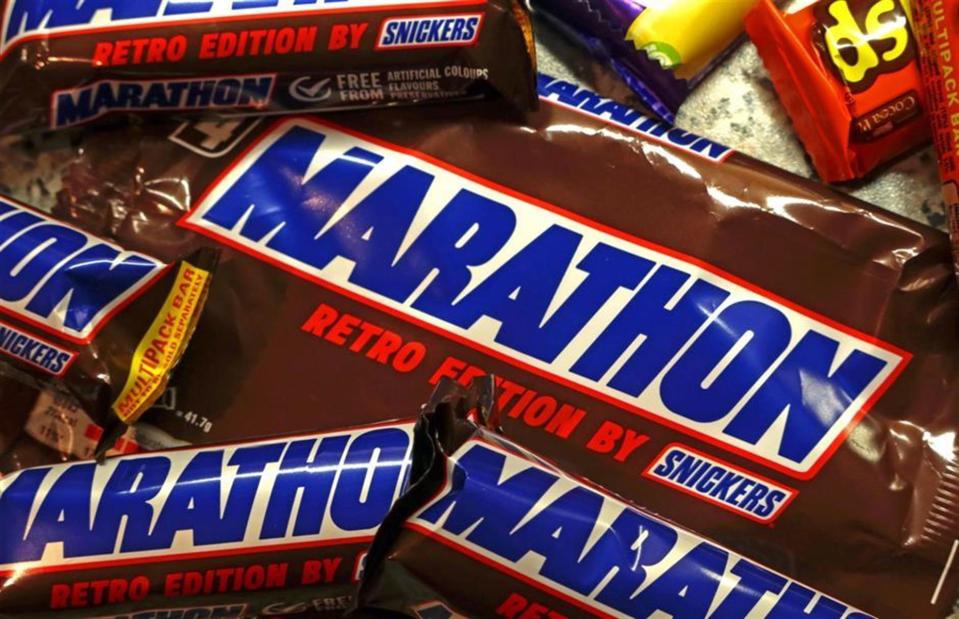
Tony Smith/Shutterstock
We all love a snack, and we all have our favourites. But what about the ones you cherished as a child? From Rice Krispies Squares to packets of Monster Munch, Twix chocolate bars and Fab ice lollies, here we look at the snacks we adored growing up in Britain and Ireland, counting down to the most iconic of all.
Read on for a taste of nostalgia as we celebrate Britain and Ireland's greatest retro snacks.
We've based our ranking on the popularity of each snack and on the opinions of our well-travelled (and well-fed) team. The list is unavoidably subjective.
44. Frosties
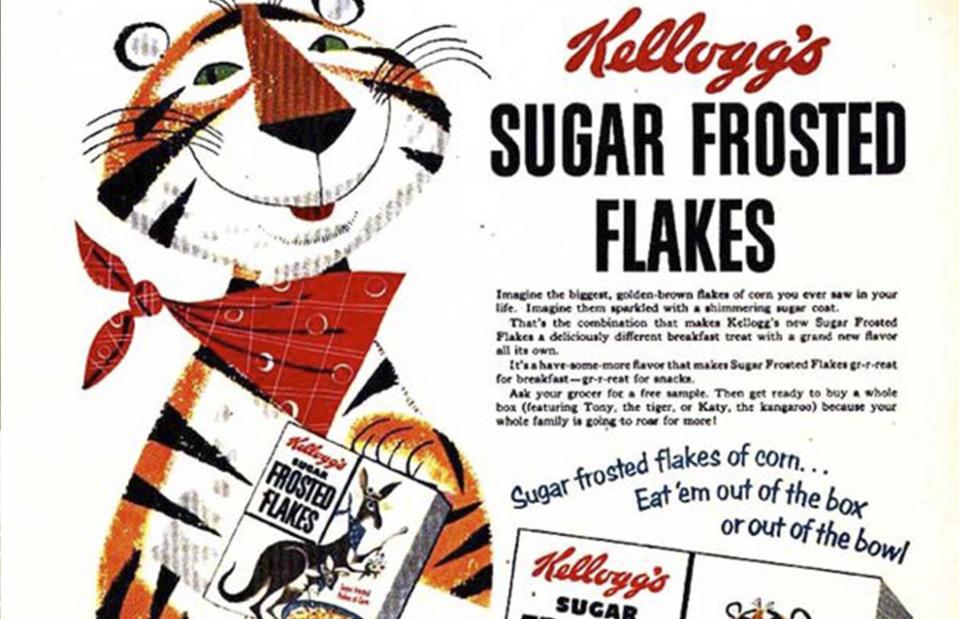
frostedflakes/Facebook
It’s no surprise that kids in the 1950s went wild for this sugar-coated breakfast cereal. Kellogg’s Sugar Frosted Flakes, which went on to be called Frosties in the UK and Ireland, launched in 1954 and were an instant hit thanks to an ingenious marketing campaign using legendary mascot Tony the Tiger and his famous catchphrase: 'They're gr-r-reat!' Despite modern trends against sugary cereal, it remains a bestseller.
43. Slush Puppie
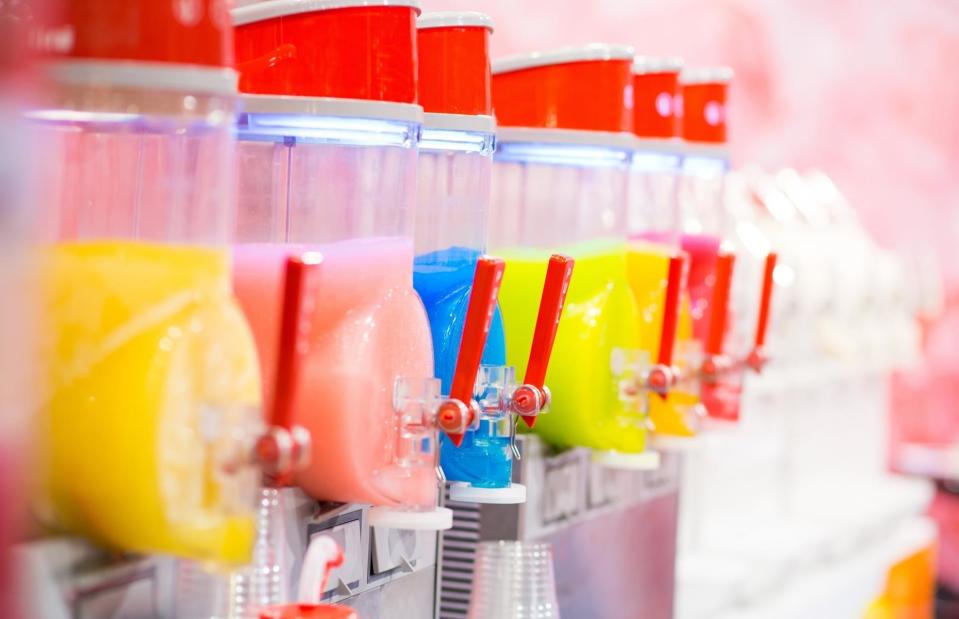
plantic/Shutterstock
For many kids, long, hot summers were all about cooling off with an icy slushy. These garish beverages, responsible for giving millions brain freeze, are actually a relatively recent treat, invented by Omar Knedlik (owner of American fast food chain Dairy Queen) in the late 1950s. The slushy drinks craze came to the UK in 1974, when Slush Puppie started selling its distinctive bright blue and red drinks at shops all over the country. It remains the UK's top slushy brand today.
42. Pop-Tarts
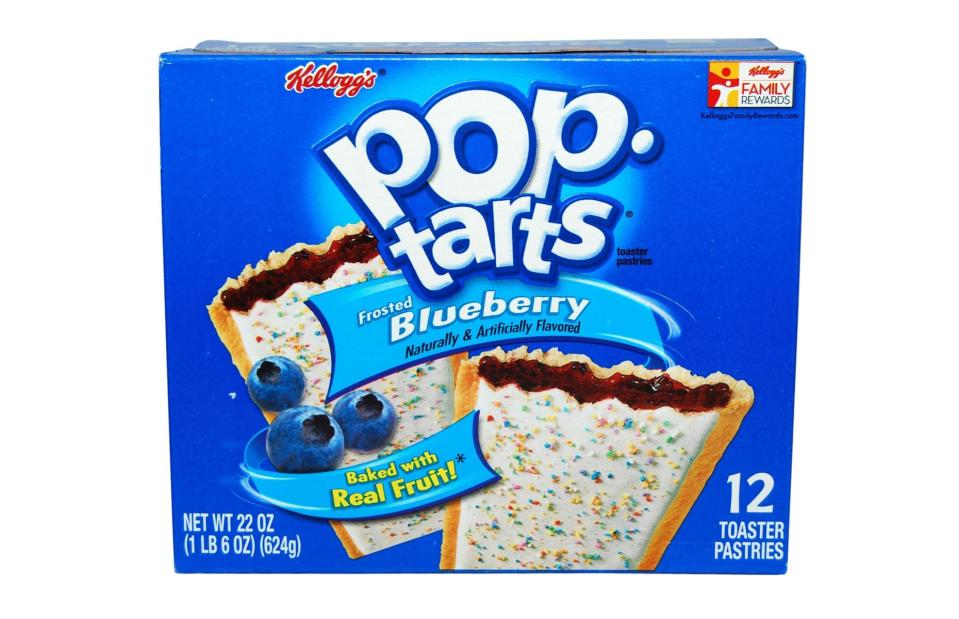
Julie Clopper/Shutterstock
An instant hit, these toasted sweet pastries weren’t frosted when they arrived on American shelves in 1964 – this extra touch was added a few years later. However, British customers had to wait almost 30 years to get their hands on the tasty treats. Pop-Tarts were introduced in the UK, with a fair amount of fanfare, in the early 1990s and they proved wildly popular. They've since become available in Ireland, and while originally sold in four flavours, there are more than twenty varieties available these days.
41. Ben & Jerry's ice cream
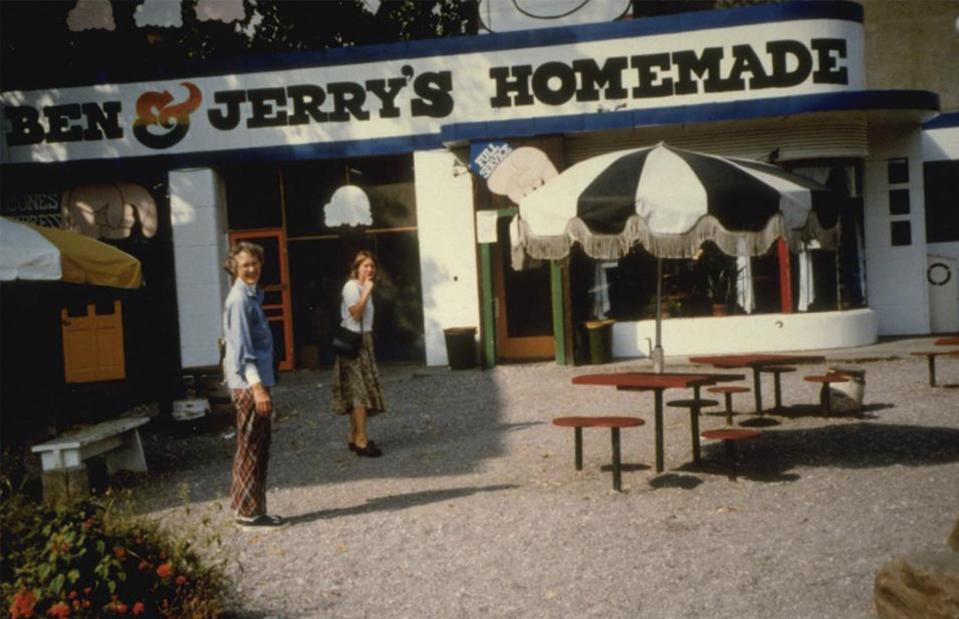
benandjerrys/Facebook
Starting with one ice cream parlour in Vermont, Ben Cohen and Jerry Greenfield built up an empire in a few years, thanks to their creative flavours, quirky packaging and ethical stance. By 1981 they were opening their first franchise and come the mid-1980s, everyone wanted to try their ice cream. In 1994, the first pints of Ben & Jerry's ice cream began to appear in the UK, before landing in Ireland in 2000. Iconic flavours like Phish Food and Cherry Garcia were adored from the get-go. Pictured is the first ever Ben & Jerry’s store, located in an old gas station in Vermont.
40. Egg McMuffin
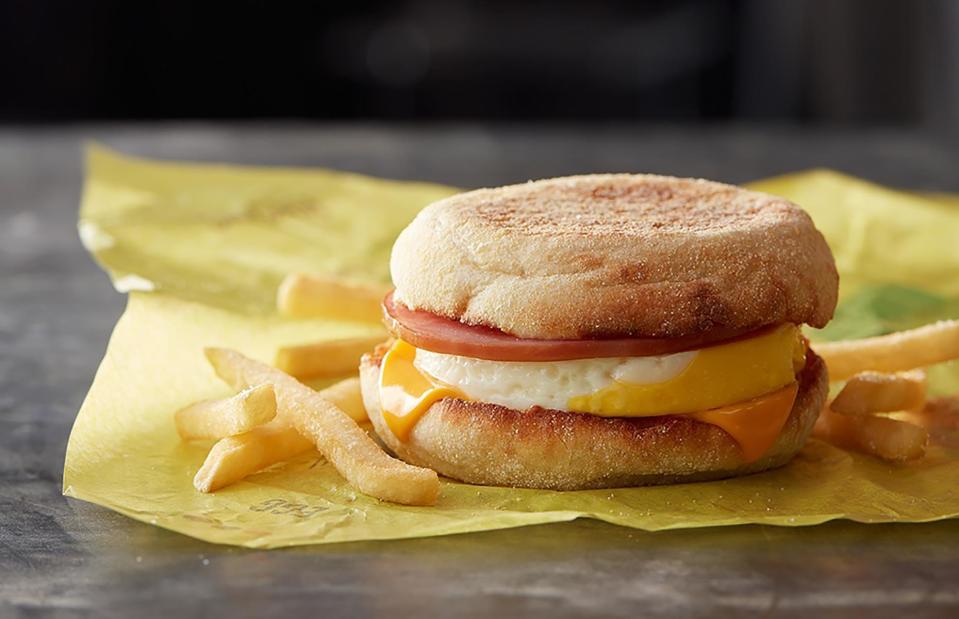
McDonalds616EGreenSt/Facebook
This snack would be eaten all day if McDonald’s allowed it, but the chain's breakfast offerings usually end by 10.30am in the US and 11am in the UK and Ireland. Consisting of a griddled egg, bacon and American cheese in a toasted English muffin, the Egg McMuffin has been a key dish in the US since the early 1970s. However, breakfast items weren't introduced to the UK and Ireland until 1982.
39. Doritos
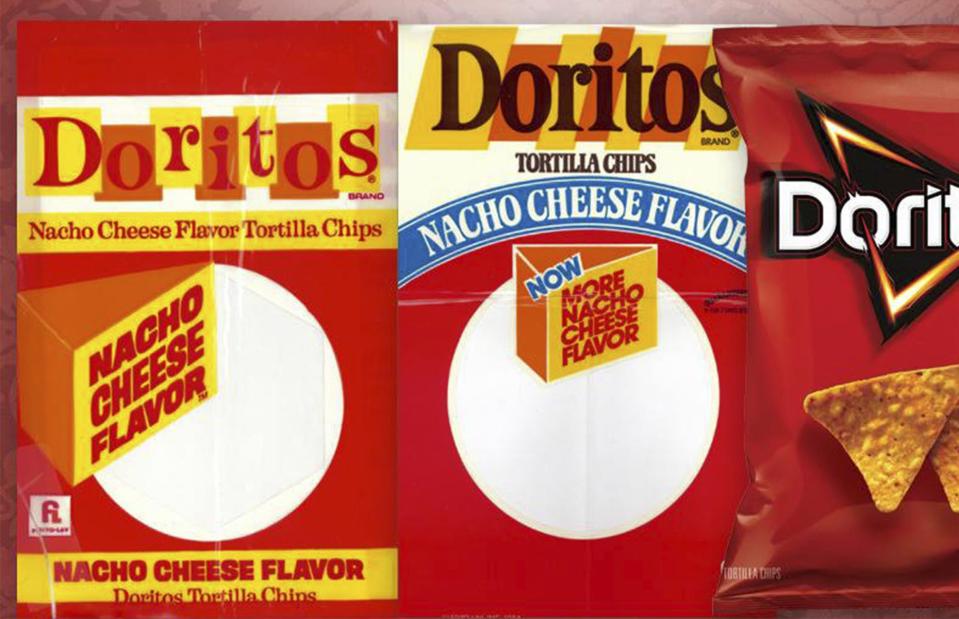
FritoLay/Facebook
Doritos Tortilla Chips have been around since 1964, when Frito-Lay’s marketing vice president discovered the snack at Disneyland, California. They launched in the UK in 1994 and quickly became a household name. The salty chips are ubiquitous all over the world today, with Tangy Cheese, Cool Original and Chilli Heatwave firm British and Irish favourites.
38. Bertie Bott’s Every Flavour Beans
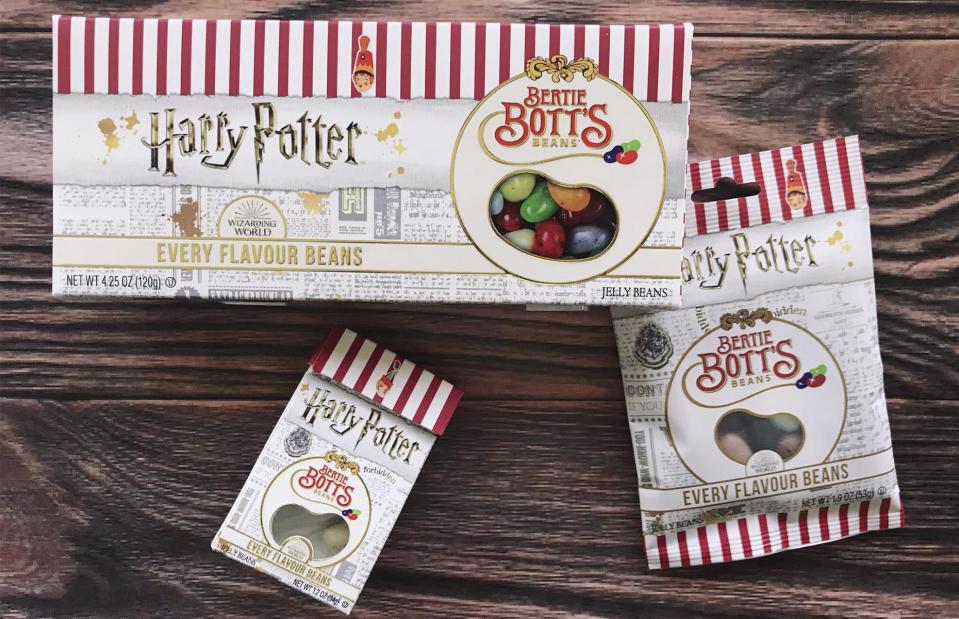
JellyBellyUSA/Facebook
Capitalising on the obsession with all things Harry Potter, Jelly Belly obtained the licence to sell Muggle versions of the Every Flavour Beans described in the much-adored books in 2005. Less appetising flavours include soap, earwax and dirt, but that certainly hasn’t put Potter fans off trying them.
37. Popchips
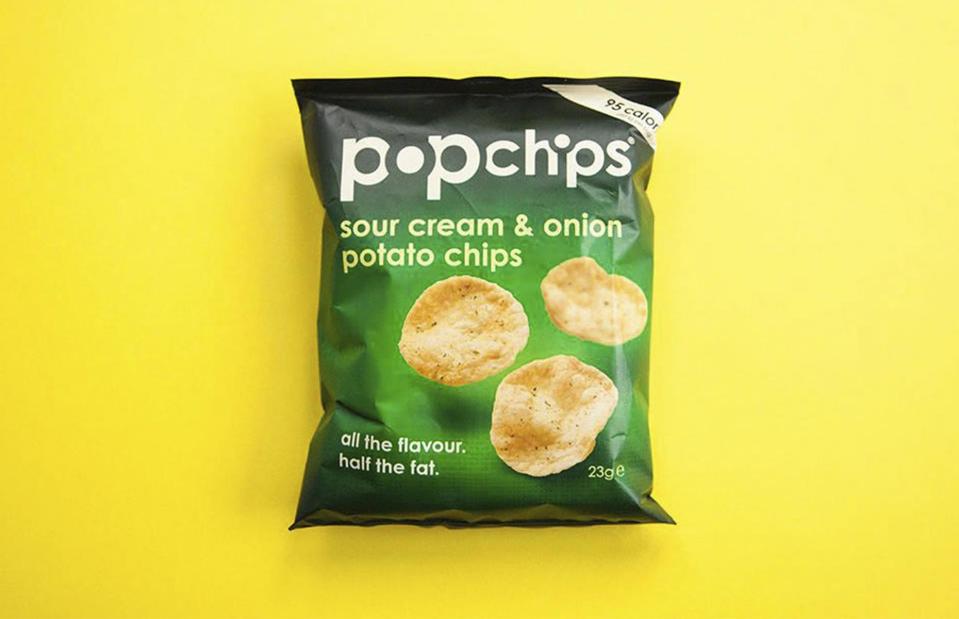
popchips/Facebook
Known for a big celebrity marketing campaign that featured Katy Perry and Ashton Kutcher, Popchips are made in a similar way to puffed rice cakes, which makes them lighter and lower in calories, fat and saturated fat than conventional potato chips. They launched in the US in 2007, arriving in the UK in 2012 and Ireland in 2014. Popchips are also GM-free and contain no artificial colours or flavours, but critics say they’re still just potatoes and salt, albeit a healthier version.
36. Reese's Pieces
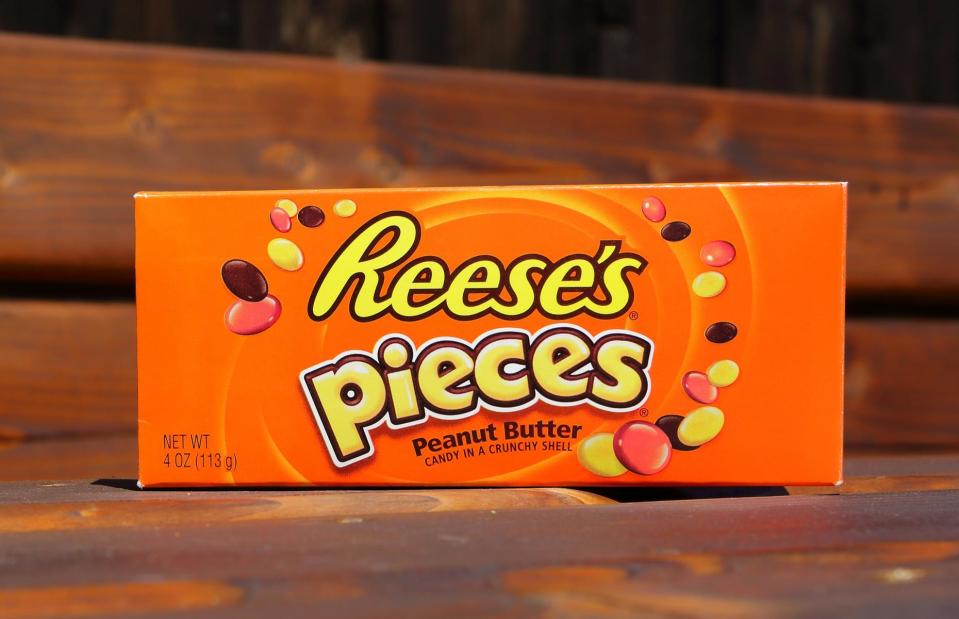
emka74/Shutterstock
Launched in the USA in 1978, Reese’s Pieces are peanut-flavoured candies in an orange, brown or yellow crispy coating that were immortalised in the 1982 film E.T. the Extra-Terrestrial – a great early example of successful product placement. However, Reese’s mania didn’t reach British shores for well over a decade, with the tasty nuggets finally becoming available in 1996.
35. Rice Krispies Squares
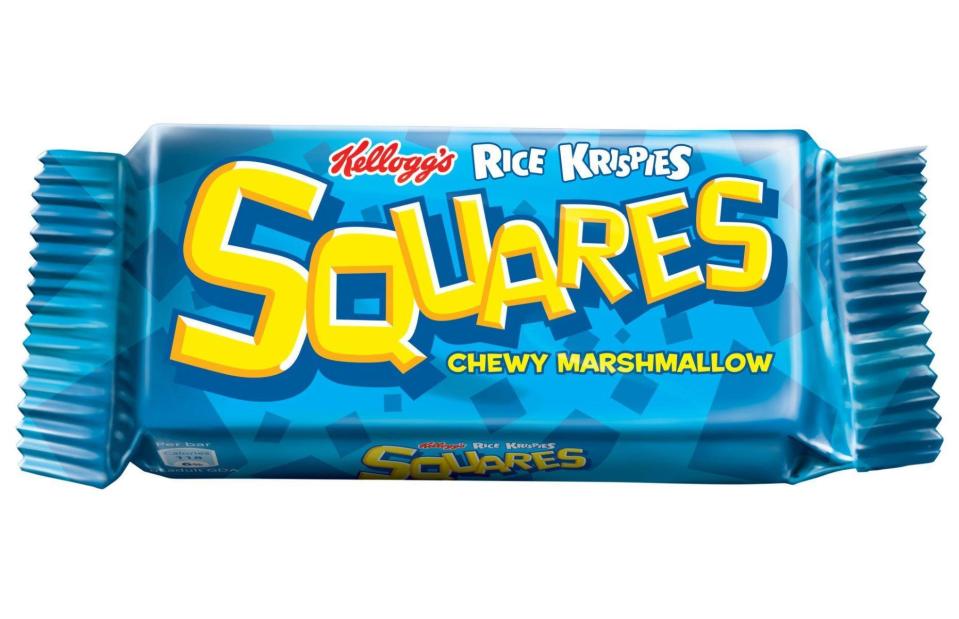
KelloggsUK/Facebook
Parents and kids had been making Rice Krispie cakes at home by combining the puffed rice cereal with melted butter and marshmallows for years before Kellogg’s finally launched its own packaged version in 1995. Soft, crunchy and chewy, they were a lunchbox staple for many of us and continue to be enjoyed today.
34. McFlurry
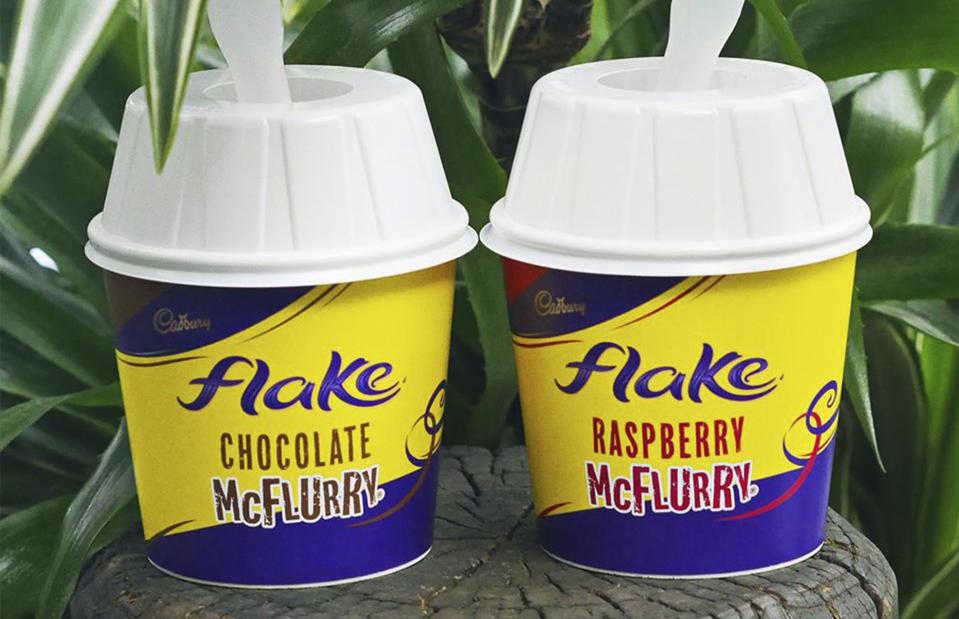
McDonaldsUK/Facebook
Invented by a Canadian franchisee in 1995, and rolled out across the US in 1998, the McFlurry has become an integral item on McDonald’s menus. The soft serve ice cream is crowned with a vast array of toppings that include Crunchie, Oreo and Dairy Milk. Fans in the UK and Ireland had to wait until 2000 to get their hands on the icy treat.
33. Monster Munch
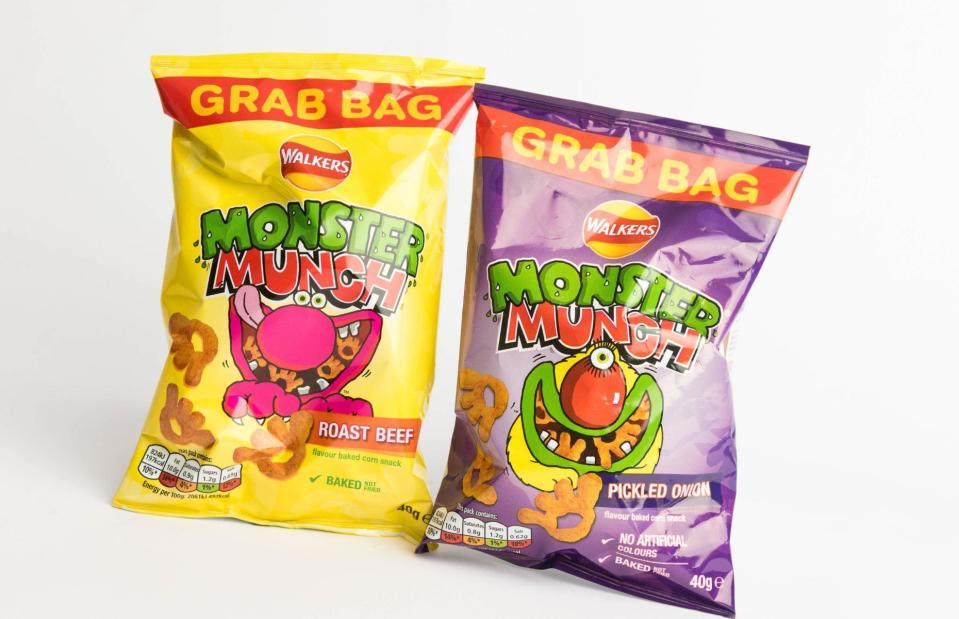
Ben Gingell/Shutterstock
Launched in 1977 by Smiths, Monster Munch were initially rolled out as The Prime Monster and advertised as being ‘bigger than your average snack’ due to the hefty size of the crisps – but they were quickly rebranded as Monster Munch in 1978. Over four decades later they’re still a much-loved snacking option, renowned for their airy texture, distinctive monster foot shape and punchy flavours, including Roast Beef, Pickled Onion and Flamin’ Hot.
32. Cupcakes
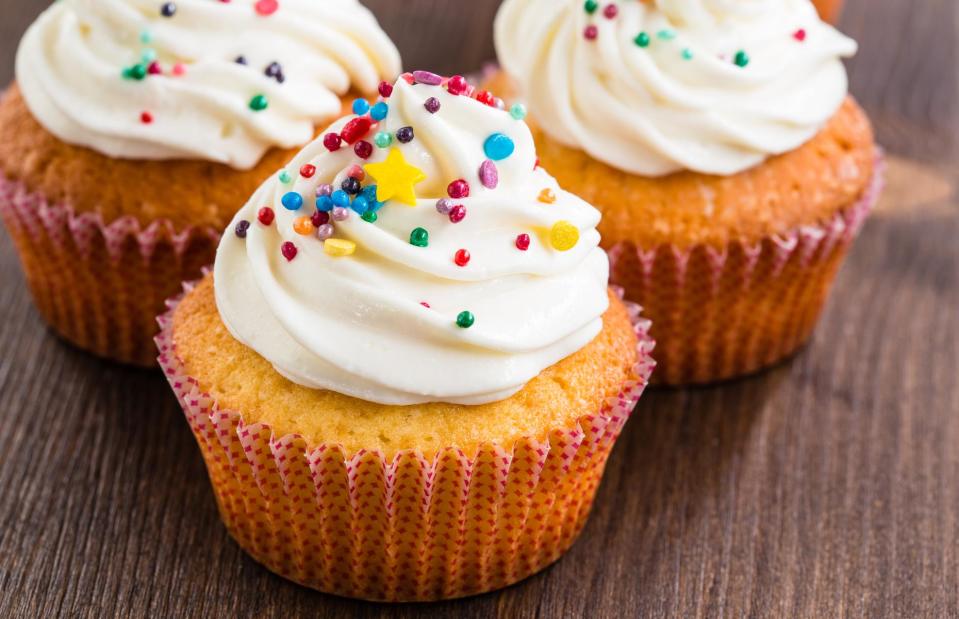
istetiana/Shutterstock
The cupcake trend was more of an explosion than a steady rise. In one episode of Sex and the City, Miranda and Carrie visited Magnolia's Cupcakes and such was the impact of the show that in 2010 the shop had to be taken off the NYC tour as it couldn't keep up with demand. The trend is thought to have peaked in 2012, with the closure of US cupcake chain Crumbs in 2015 being the final nail in the coffin. Cupcake lovers may vehemently dispute this, however, and British chains like Lola's Bakery and The Hummingbird Bakery are still going strong.
31. Bubble Tape
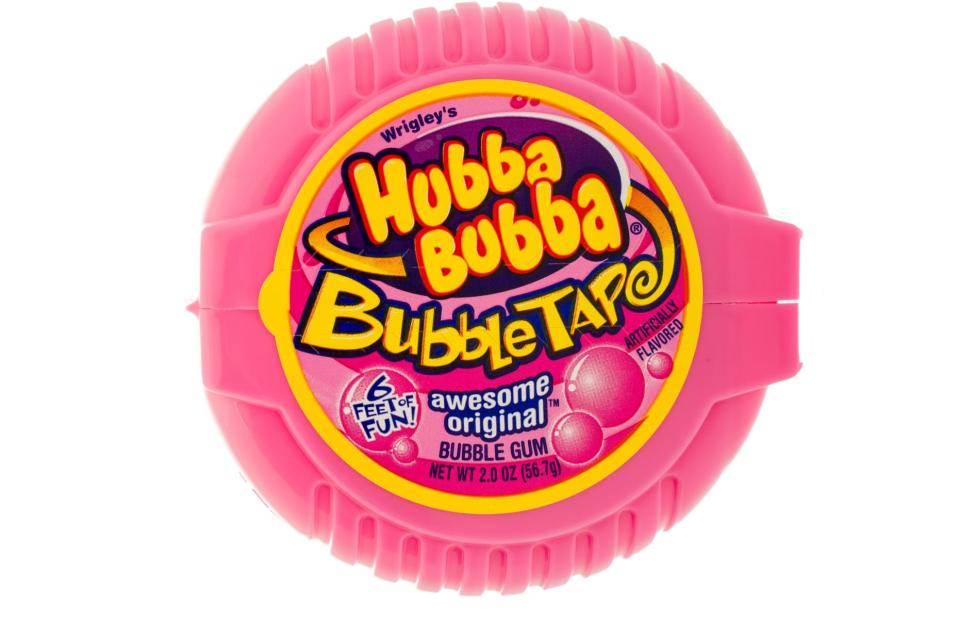
Keith Homan/Shutterstock
Hubba Bubba gum always had a young following because of its excellent bubble blowing potential. But Wrigley really struck gold when Bubble Tape was launched in the late 1980s. Its success was attributed to its unique (at the time) tape dispenser packaging and the variety of flavours.
30. Pork scratchings
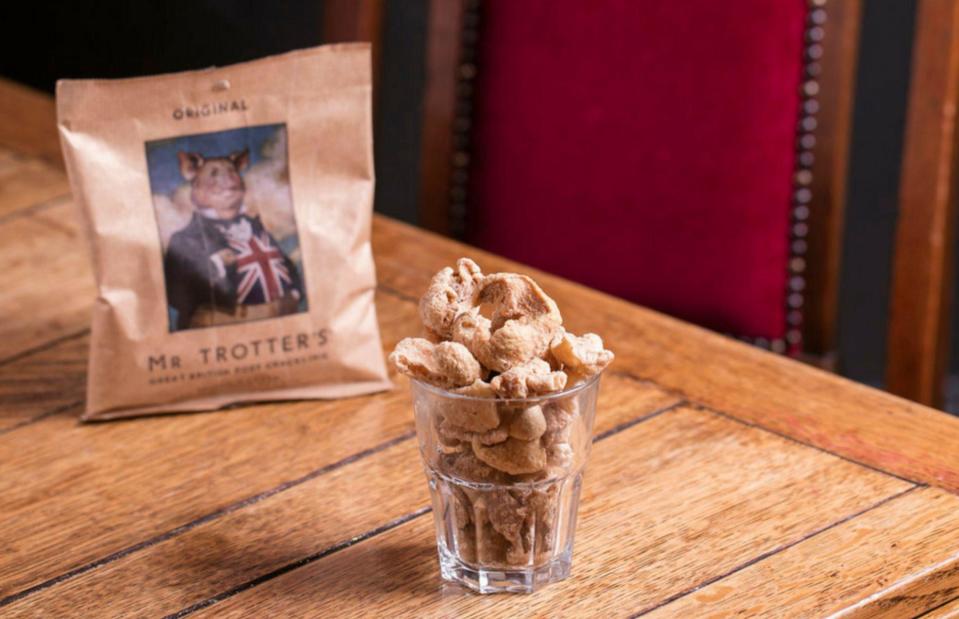
MrTrotters/Facebook
It was only a matter of time before pork scratchings shook off their old man associations, got a modern update and became fashionable again. Since the early 2010s, artisan producers have been putting a gourmet twist on the meaty snack, with brands like Mr Trotter’s (founded in 2011) leading the way by using quality meat and natural flavourings.
29. Pot Noodle
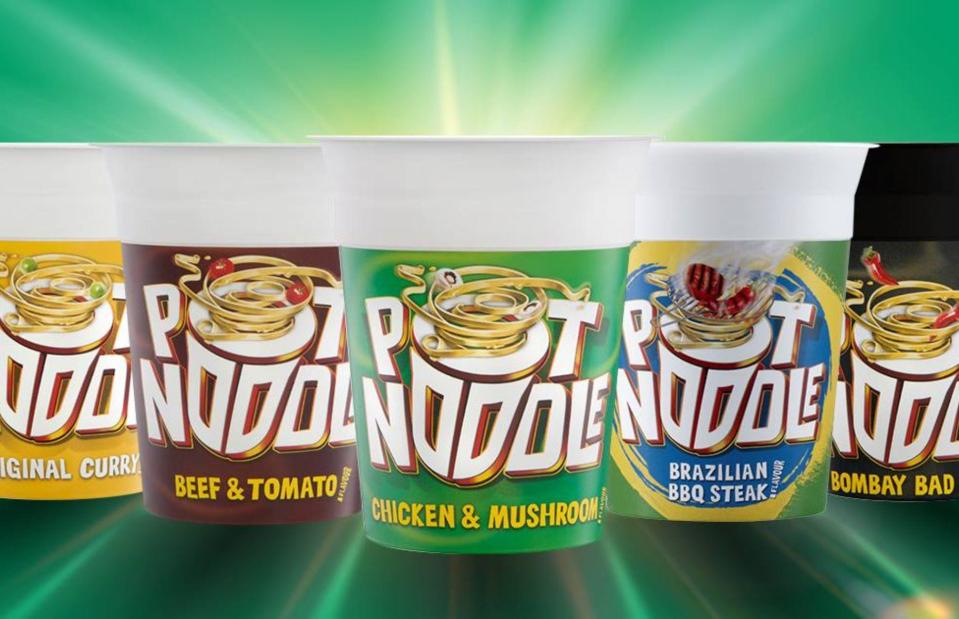
potnoodle/Facebook
Pot Noodle was launched way back in 1977 by Golden Wonder, when convenience food was all the rage and noodles were exotic. The original idea of 'cup noodles' came from Japan, but Pot Noodle put a very British twist on the idea of ramen with recognisable flavours like Chicken & Mushroom and Beef & Tomato. Cheap and easy, this was a student staple – all you needed to know was how to boil a kettle and you’d have yourself a hot snack in minutes.
28. Pringles
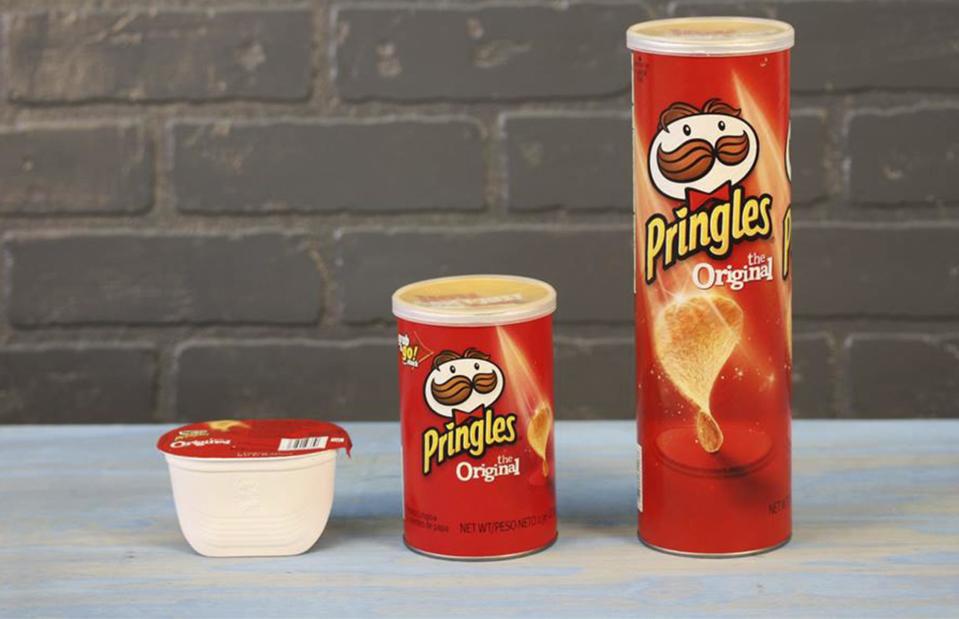
PringlesUS/Facebook
Pringles were first sold in 1967 as Pringles Newfangled Potato Chips, but it was from 1975, when they were widely distributed, that the brand really took off in the USA. They arrived in British and Irish shops in the 1990s and the catchy slogan, ‘Once you pop you can’t stop’, sealed the snack’s position as one of the most recognisable potato crisps around. The stackable brand is best known for its classic red, green and blue tubes, but around the world you can find flavours from deep-fried pickle to wasabi mayo.
27. McDonald’s Chicken Snack Wrap

McDonalds/Facebook
In a move towards healthier menu items, McDonald’s introduced the Chicken Snack Wrap in 2006. Featuring crispy chicken, lettuce, cheese and dressing in a tortilla wrap, the portable wraps were a particular hit amongst young customers. But despite its popularity, the cult menu item was discontinued in 2016, apparently because it was too time-consuming for staff to make. However, McDonald’s has hinted that the snack wrap will be making a comeback in 2025.
26. Tracker bars
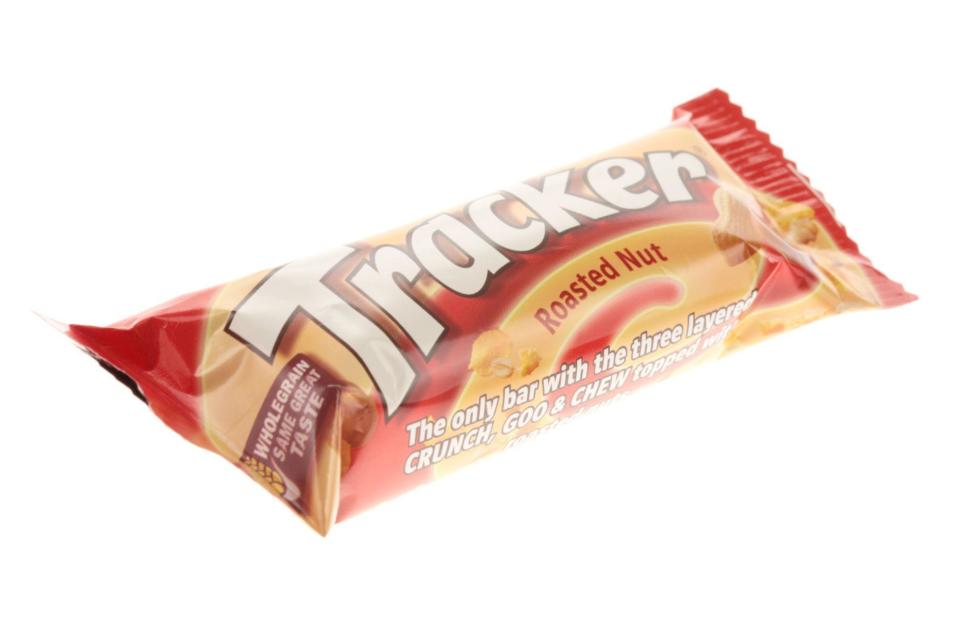
Martin Lee/Alamy Stock Photo
Nature Valley was the first brand to sell a mass-produced granola bar, introducing this fruit, nut and cereal snack to the American public in the mid-1970s. However, in the UK and Ireland it was all about the Tracker bar, which was launched by Mars in 1986. Many granola bars have since faced criticism for their high sugar content, and today there are a plethora of options with varying degrees of nutritional goodness.
25. Frubes
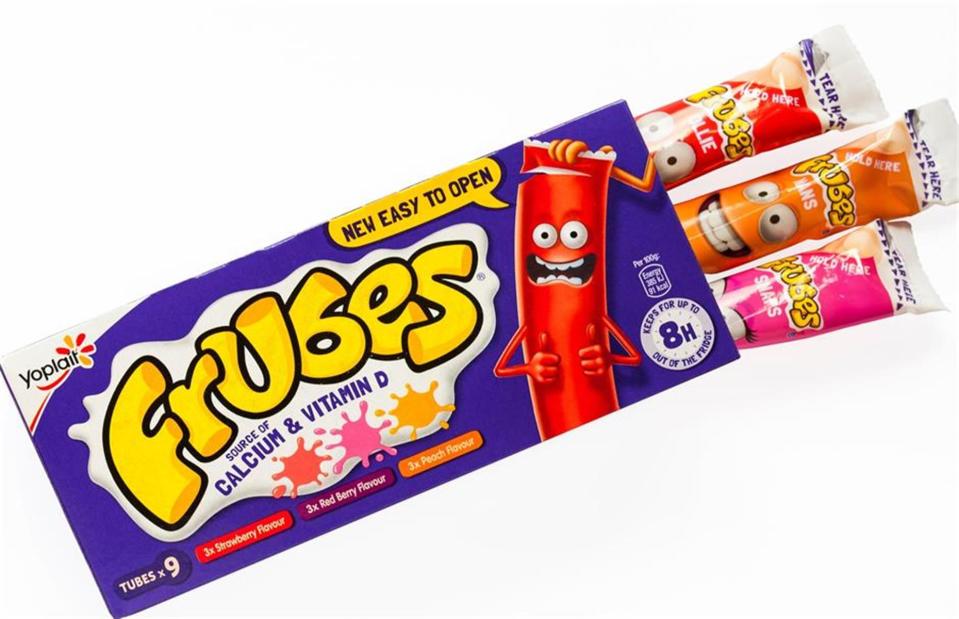
Carolyn Jenkins/Alamy Stock Photo
These squeezable flavoured yogurt pouches were first introduced by French brand Yoplait in the mid-1990s and continue to be adored by children almost three decades later. Stuffed inside many a school lunchbox, Frubes offered a spoon-free way for kids to get their yogurt fix easily. They come in a host of flavours, including strawberry, peach and red berry.
24. Skittles

skittles/Facebook
Skittles, you may be surprised to hear, are not a US creation but a British one, appearing in shops in 1974 (and crossing the Atlantic five years later). These fruity, chewy sweets with hard shells have been a runaway success, thanks in part, to quirky, colourful and often surreal ad campaigns.
23. Space Raiders
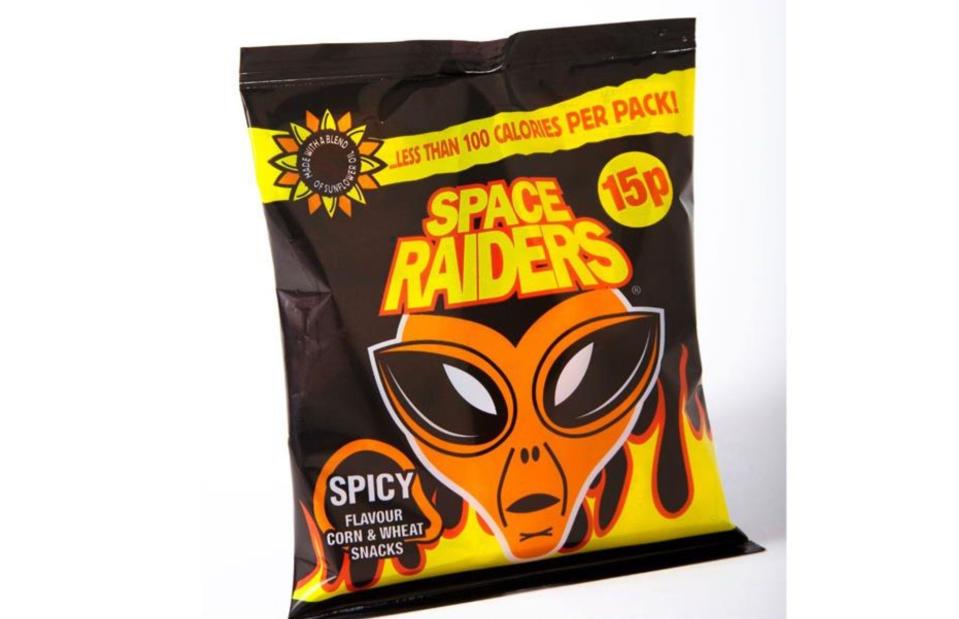
Steve Stock/Alamy Stock Photo
While you can’t quite get a packet for just 15p these days, fans of the alien-shaped snacks can still walk into corner shops across the UK and spot Space Raiders amongst the crisp selection. Released in 1987 by KP Snacks, these treats come in four delicious flavours: Beef, Spicy, Pickled Onion and Saucy BBQ.
22. Brunch ice cream bars

Medicimage Education/Alamy Stock Photo
A childhood favourite of anyone growing up in Ireland during the 1990s and early 2000s, the Brunch ice cream bar is defined by its pink strawberry centre and biscuit crumb coating. This pretty-in-pink ice cream is produced by Walls and fans of the ultra-sweet treat can still get their hands on it today.
21. Anglo Bubbly

razorpix/Alamy Stock Photo
If there’s one bubblegum that you remember from your childhood growing up in the UK, it’s probably this vintage gem. Anglo Bubbly was introduced in 1932 by the British confectioner Barratt and became a favourite treat for many generations, instantly recognisable for its bright pink colour, round shape and distinctive pear flavour. After a packaging revamp in 2009 the recipe was tweaked slightly and it’s now made from 100% natural colours and flavours.
20. Dairylea Lunchables
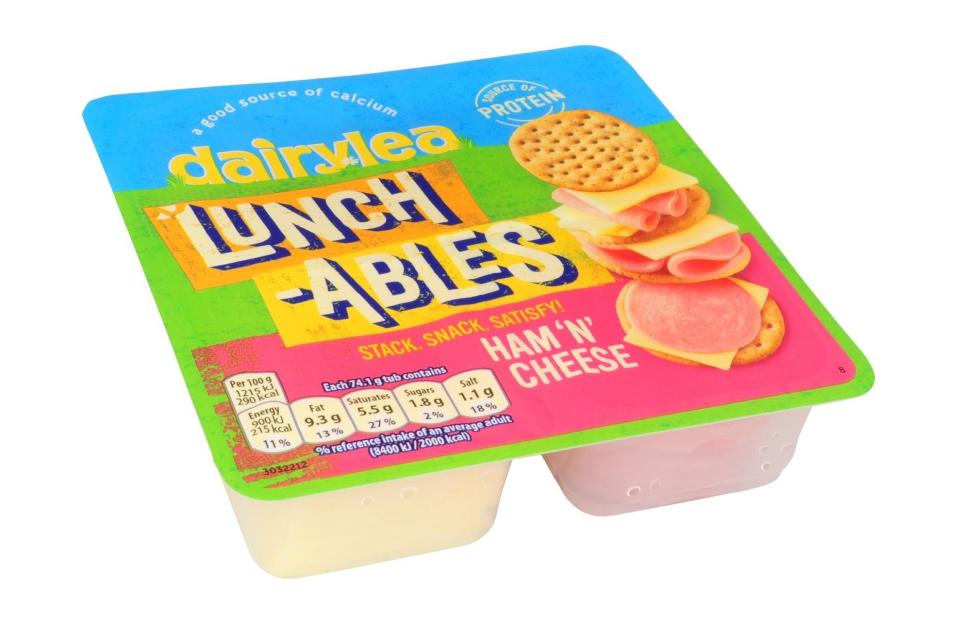
Philip Kinsey/Shutterstock
Only the luckiest 1990s school children got Dairylea Lunchables instead of soggy sandwiches in their packed lunch. These handy snack boxes first came on sale in 1998 (back when we didn’t really think about ultra-processed food and single-use plastics) and contained perfect little rounds of ham and processed cheese, which you could sandwich together inside crackers for the ultimate make-your-own lunch.
19. Hula Hoops

urbanbuzz/Shutterstock
Who can remember slipping these crunchy snacks onto their fingers? Launched in 1973, Hula Hoops became an instant hit with children and adults alike thanks to their distinctive 3D shape and fun factor. Produced by KP Snacks, these potato-and-corn hybrid crisps come in a variety of flavours including Salt & Vinegar, Cheese & Onion, Original, BBQ Beef and more.
18. Fab ice lolly

Martin Lee/Alamy Stock Photo
An enduring summertime treat, the Fab lolly was first sold in 1967 alongside the rocket-shaped Zoom, another cult favourite that was sadly discontinued in the late 1990s. Each Fab – which stands for fruit and berries – has a layer of strawberry, milk and chocolate, with the latter covered in sprinkles. It remains popular to this day and various limited-edition flavours have been released over the years, including orange, lemon and a special Birthday Cake version to celebrate the lolly’s 50th anniversary.
17. Party Rings

partyringsofficial/Facebook
Who can remember when every birthday party buffet featured a plate of these colourful snacks? British confectionery brand Fox’s Biscuits released Party Rings in 1983 to flying success and they continue to delight children with their pastel icing and doughnut-like shape. Fans of the biscuit can still purchase packets, as well as enjoy miniature and chocolate versions.
16. Bounty
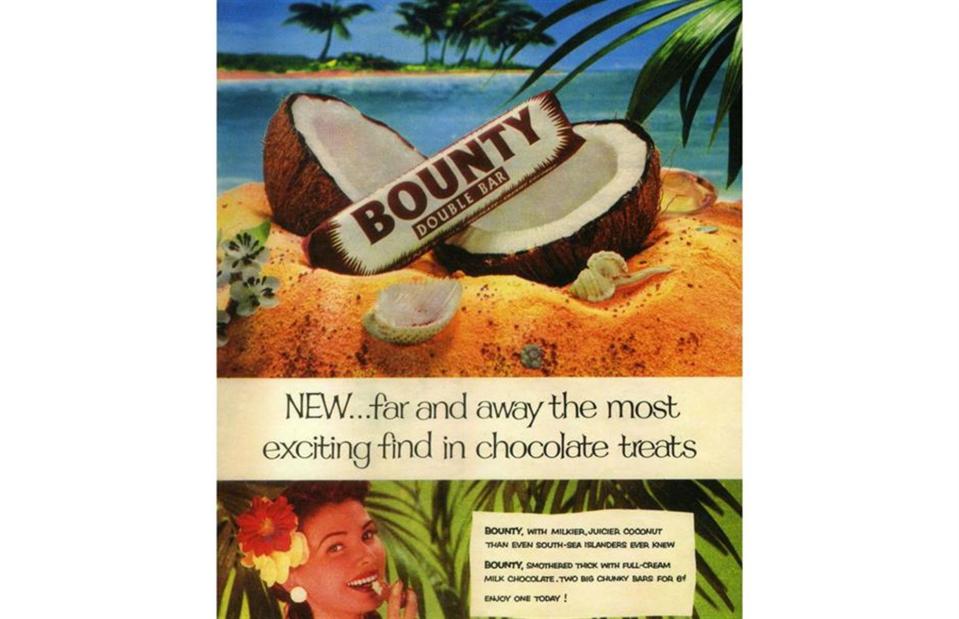
Pictorial Press Ltd/Alamy Stock Photo
With its sweet coconut centre and milk chocolate coating, the Bounty instantly divided the crowd when it first landed on supermarket shelves in 1951. Marketed by Mars as a tropical treat, the bar became renowned for its signature holiday-themed advertising campaigns. Fans can still enjoy a Bounty bar seven decades later and also have the option to indulge in Bounty ice cream.
15. Twiglets
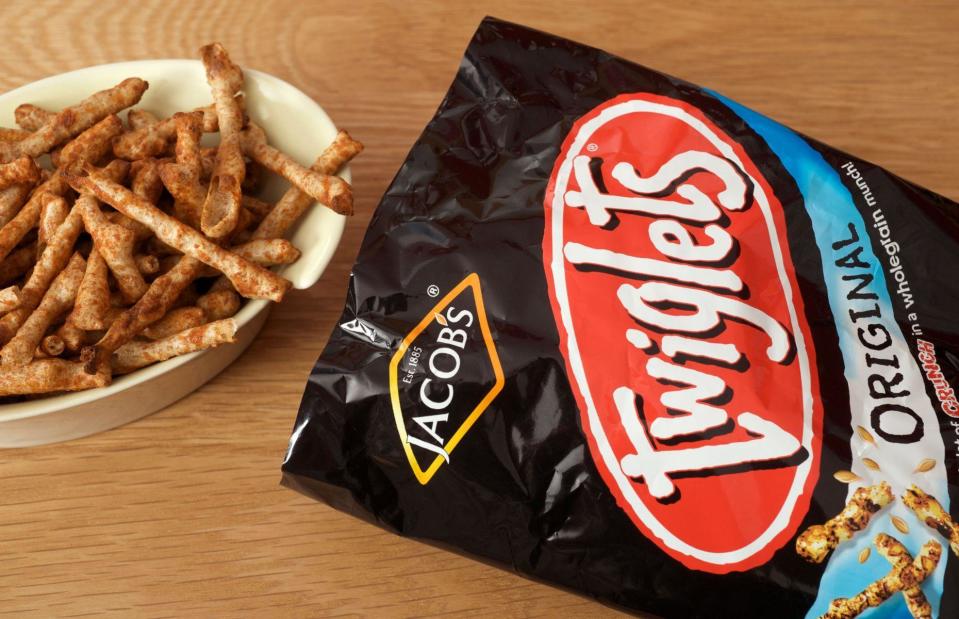
Clynt Garnham Food & Drink/Alamy Stock Photo
A staple on Christmas buffet tables, Twiglets were among the UK’s first savoury snacks, invented in 1929 when French biscuit maker J. Rondalin decided to add brewer's yeast to a leftover batch of cracker dough. They were first sold in the UK in 1932 and have been a staple in cupboards ever since. The distinctive flavour of the crunchy sticks is similar to Marmite, and certainly tends to be something you either love or hate. The recipe was changed significantly in 2022, with the new version containing 60% less salt and being baked rather than fried.
14. Cheesestrings
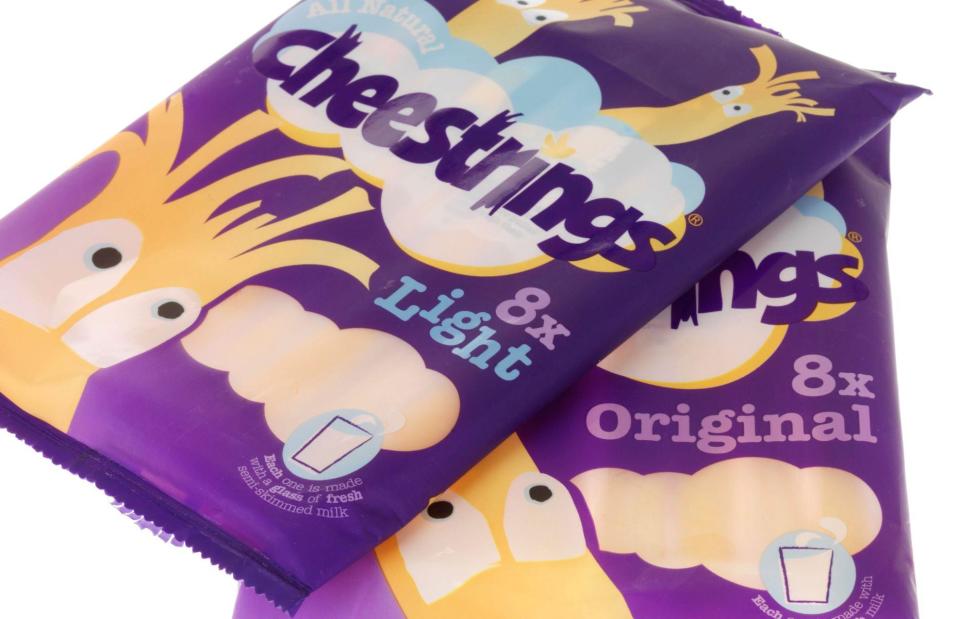
Martin Lee/Alamy Stock Photo
Bursting onto the snack scene in 1996 with a zany-looking cheese character and the catchy tagline ‘Real A-peelable Cheese’, Cheesestrings were loved by kids because they made playing with your food acceptable. Parents got on board because they were made of ‘real’ cheese. Produced by Strings & Things, these tube-shaped, plastic-wrapped snacks had a unique texture that allowed you to peel off strings of cheese. Over time the brand has introduced various flavours and types, including Twisted (a combination of Cheddar and mozzarella) and Pizza.
13. Frazzles

Ben Gingell/Shutterstock
Designed to look and taste like rashers of bacon, Frazzles have been a national favourite since Smiths launched them in 1975. Now owned by Walkers, the corn-based snack continues to be popular and you’re always likely to find a grab bag lining corner shop shelves. Many copycat supermarket versions also exist, though diehard fans would argue that you simply can’t beat the original.
12. Jacob’s Mikado

jacobslovebiscuits/Facebook
A popular choice in the 1980s and 1990s, Irish confectionery brand Jacob’s won over the nation with its Mikado creation. This sweet treat featured a desiccated coconut–covered marshmallow with a jam centre and a crumbly biscuit base. Loved across Ireland, you either licked the jam, picked off the marshmallow or stuffed it all in whole.
11. Twix
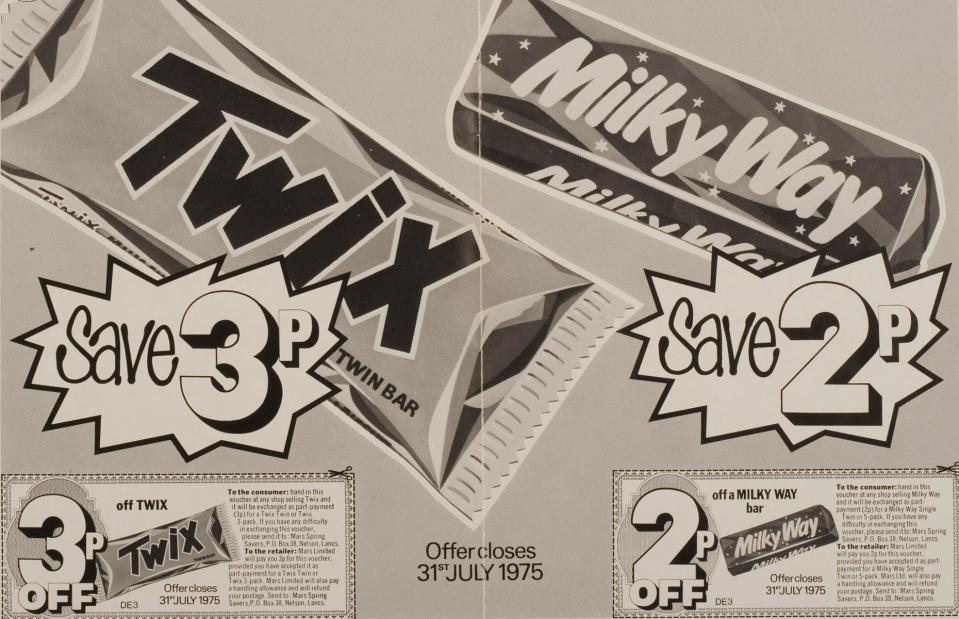
twix.us/Facebook
Many of the world’s most iconic chocolate bars are US inventions, but the Twix is a thoroughly British creation, first produced at Mars’ Slough factory and launched in 1967. The twin biscuits (hence the name Twix) with soft caramel and chocolate have done remarkably well ever since. According to the latest statistics, a staggering 161 million Twix bars are sold around the world every year.
10. Mr Kipling cakes

Carolyn Jenkins/Alamy Stock Photo
Hailing from Carlton, South Yorkshire, Mr Kipling took the nation by storm when it first launched in the late-1960s, and the baked goods brand continues to be adored today. From French Fancies (complete with soft sponge, a vanilla cream top and delicate fondant icing) to Jam Tarts, it’s hard to resist one of its sweet treats. Other popular options include Viennese Whirls, Chocolate Slices, Mini Battenbergs and Cherry Bakewells.
9. Creme Egg
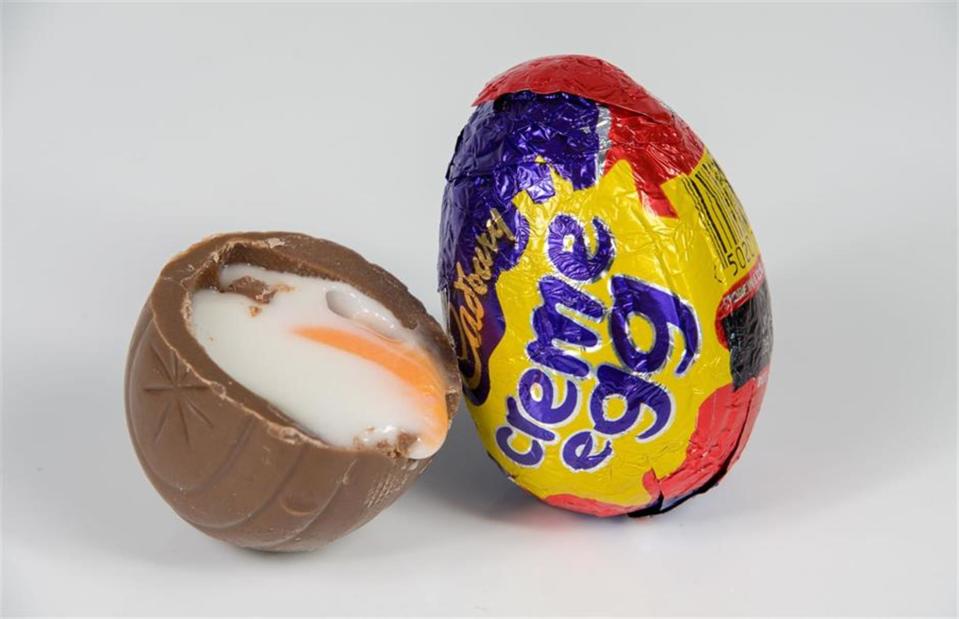
Craig Russell/Shutterstock
Signalling the beginning of spring, this Easter treat first launched in 1971 and remains one of Cadbury’s bestsellers. Shaped like a real egg, the snack comes complete with a sickly-sweet white and yellow fondant centre and a hard milk chocolate shell. Picking one of these up from the corner shop was a childhood must.
8. Golden Wonder
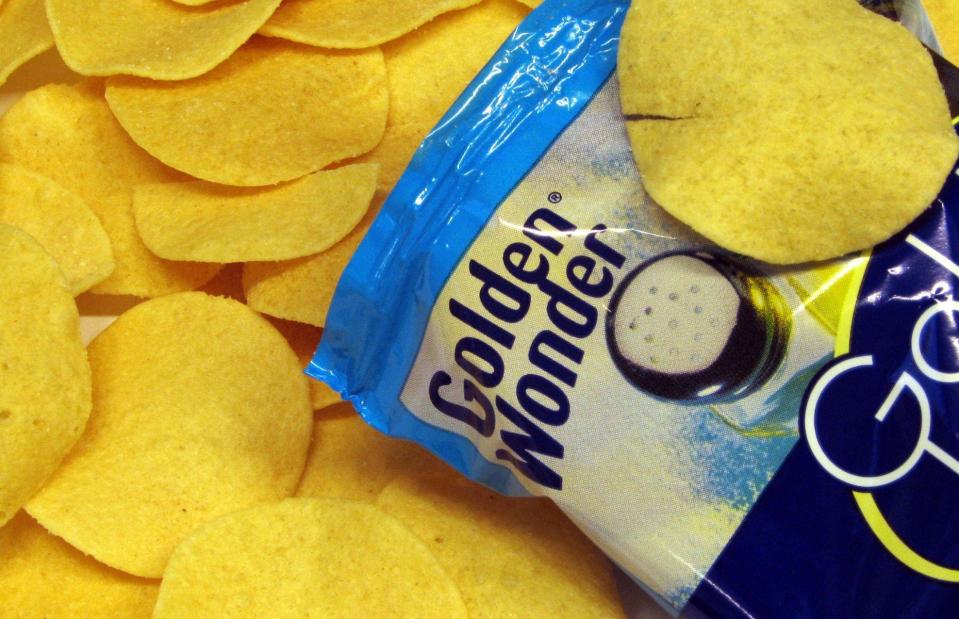
PA Images/Alamy Stock Photo
One of Britain’s most famous crisp companies, Golden Wonder was founded in 1947 by Edinburgh baker William Alexander. The story goes that after finishing a shift frying doughnuts in a deep fat fryer, he didn’t want the machines to be redundant so started dropping slices of potato into them. Alexander delivered big bags of his crisps around the city, and they were an instant hit. By 1964, Golden Wonder was the biggest crisp company in the UK, going on to create nostalgic favourites like Wotsits, Ringos and the robot-shaped Transform-A-Snack.
7. Caramac
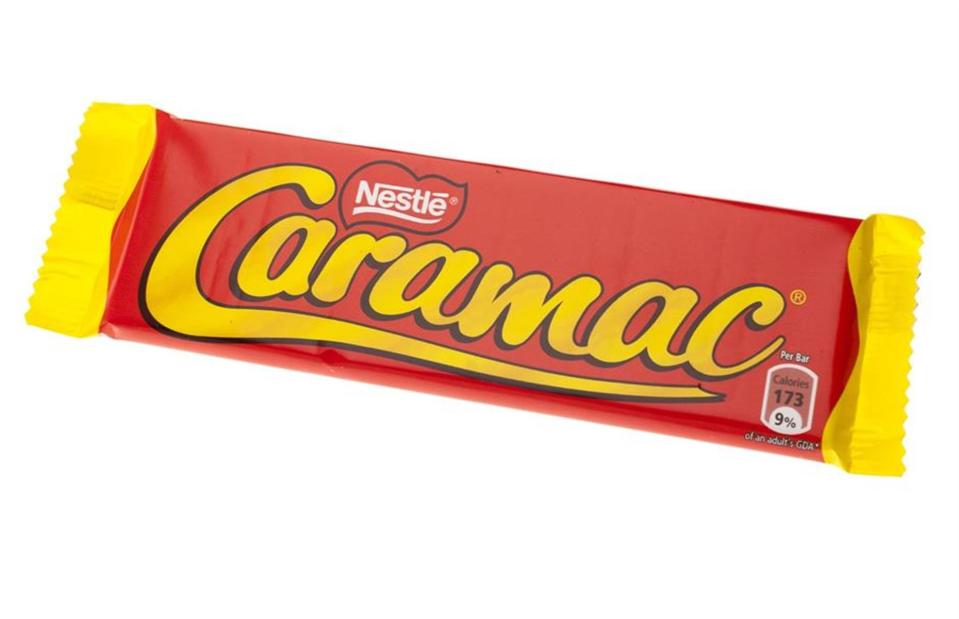
Lenscap Photography/Shutterstock
Released in 1959 by confectionery brand Mackintosh, this golden bar became an instant favourite, winning over legions of fans with its rich caramel flavour and red and yellow packaging. The brand, later sold to Nestlé, was discontinued in the UK and Ireland in 2023, but after immediate calls for its return Caramac landed back on supermarket shelves in summer 2024 for a limited run.
6. Curly Wurly
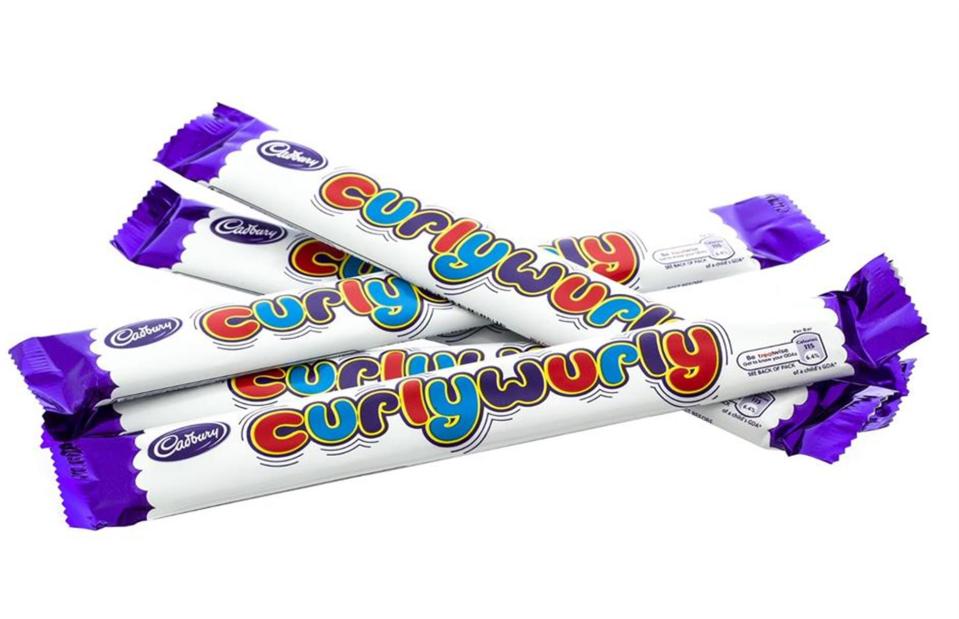
urbanbuzz/Shutterstock
Sticky, chewy and all-round delicious, the Curly Wurly first appeared on supermarket shelves in 1970 and has been a Cadbury mainstay ever since. It was invented by chance, after employee David John Parfitt started experimenting with leftover toffee at the Cadbury factory. It’s now become an iconic British chocolate bar, renowned for its distinctive packaging and twirled shape.
5. Love Hearts
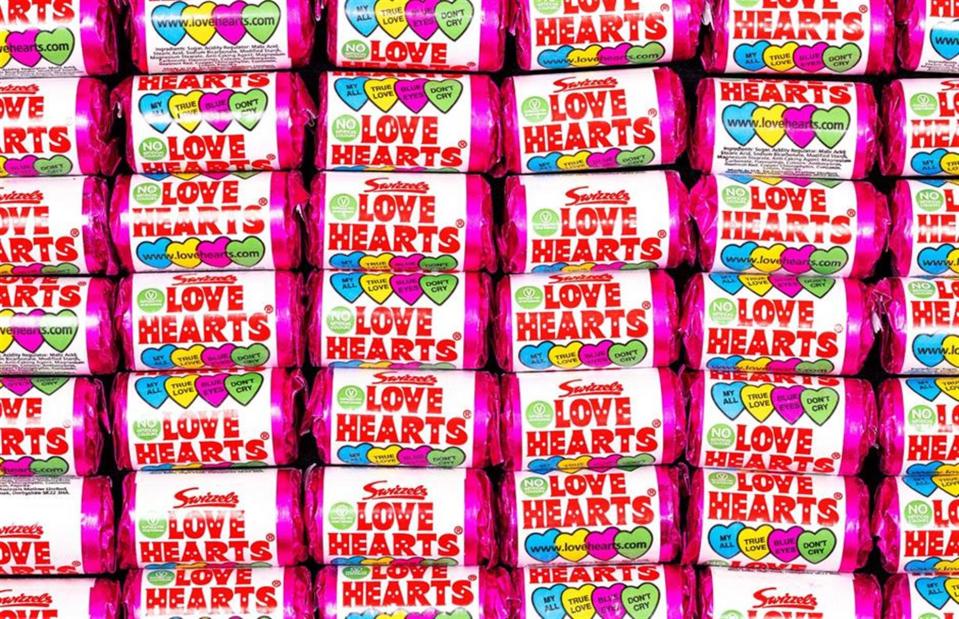
Jane Rix/Shutterstock
Loved since 1954, sweet treats don’t get more nostalgic than Love Hearts. Launched by confectionary brand Swizzles Matlow, each packet boasts circular candies featuring adorable messages like ‘BE MINE’ and ‘FOR YOU’. A common birthday party bag filler, you can still pick up these fizzy, pastel-coloured sweets in corner shops and supermarkets decades later.
4. Marathon
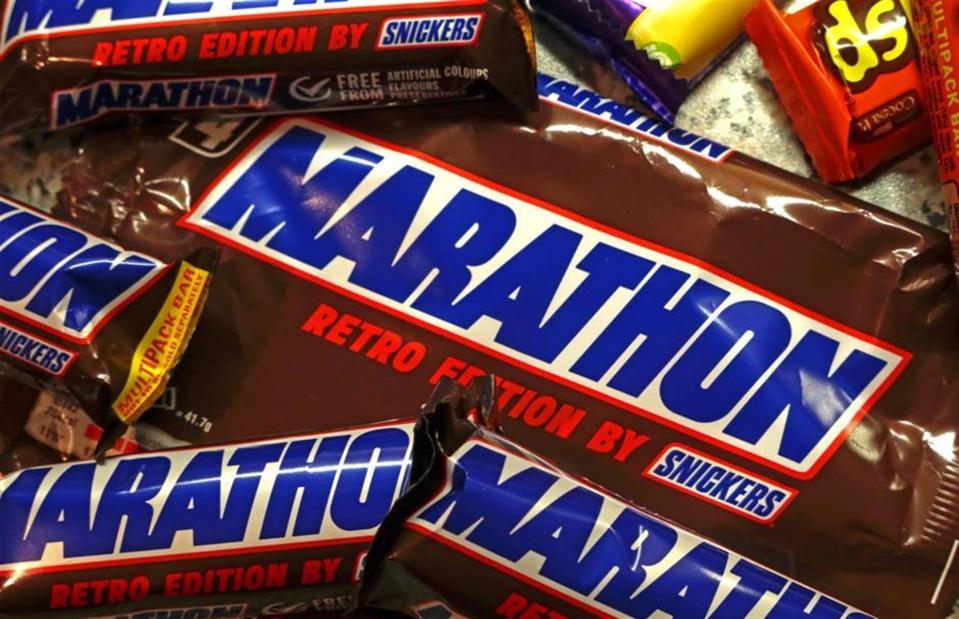
Tony Smith/Shutterstock
Taking the world by storm, this peanutty bar made its way across the Atlantic to the UK and Ireland in 1968, following a successful US launch. Initially marketed to Brits and Irish consumers as Marathon, the bar – featuring a rich caramel, peanut and nougat centre – was reinvented as Snickers in 1990 to fit the brand’s global name. Produced by Mars, the brand has launched special editions with its original name over the years, most recently in September 2024.
3. Tayto crisps
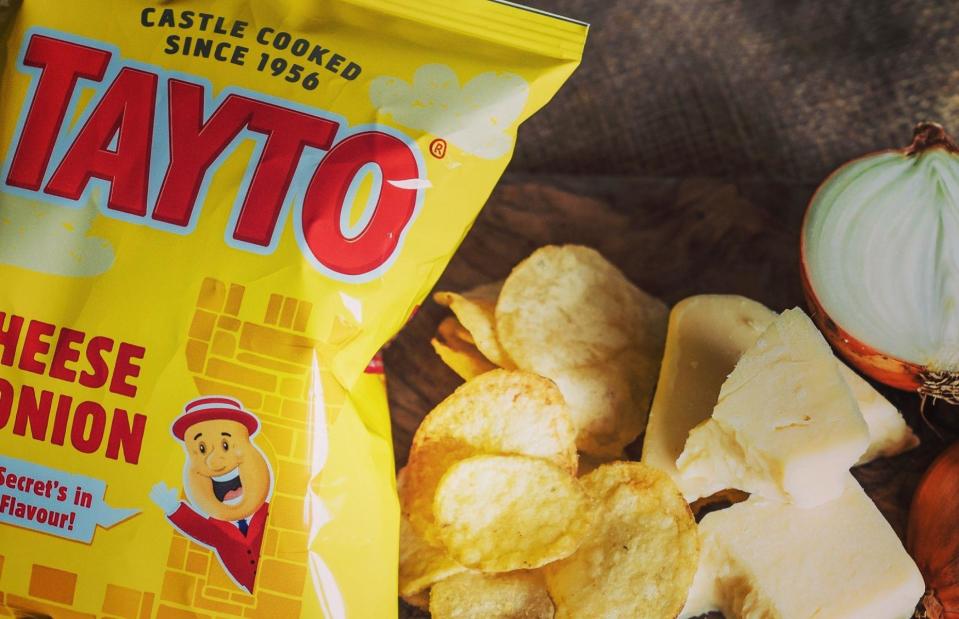
TaytoNorthernIreland/Facebook
Nowadays crisps come in every conceivable shape and variety, but it wasn’t until the 1950s that someone had the bright idea to flavour them. In 1954, the first flavoured crisps were invented by Joe ‘Spud' Murphy (owner of the Irish company Tayto) who developed a technique for adding cheese and onion seasoning during production. Salt and vinegar and smoky bacon flavours soon followed, and sales were so high the company had to expand rapidly.
2. Angel Delight
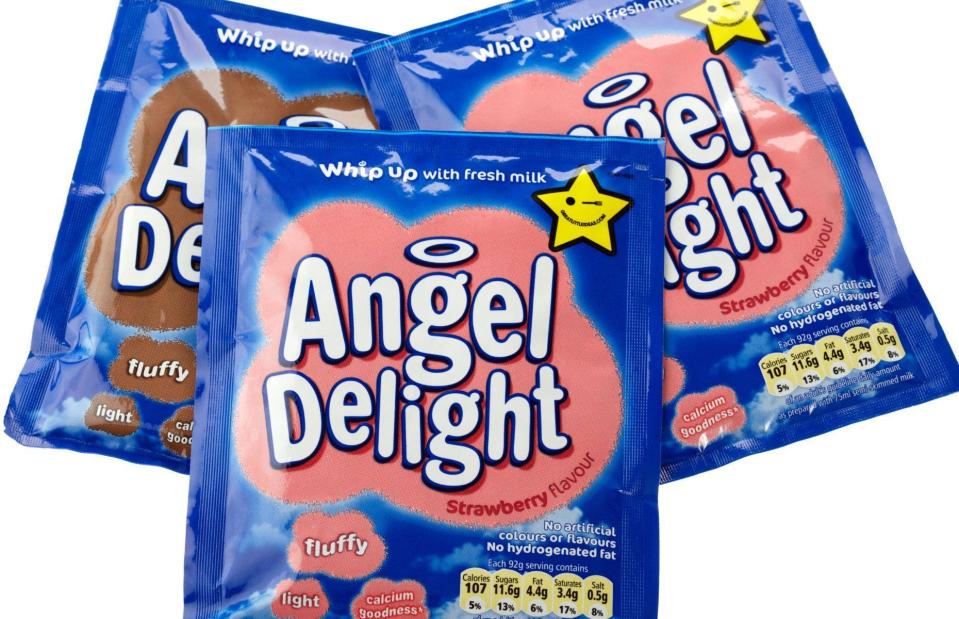
Radharc Images/Alamy Stock Photo
Desserts don’t get more retro than Angel Delight, which was adored by parents and kids alike because the sachets could easily be made up and enjoyed within minutes. Launched by Bird’s in 1967, it was first available in a strawberries and cream variety, but the more recognisable core flavours of strawberry, butterscotch, banana and chocolate were soon introduced.
1. Opal Fruits
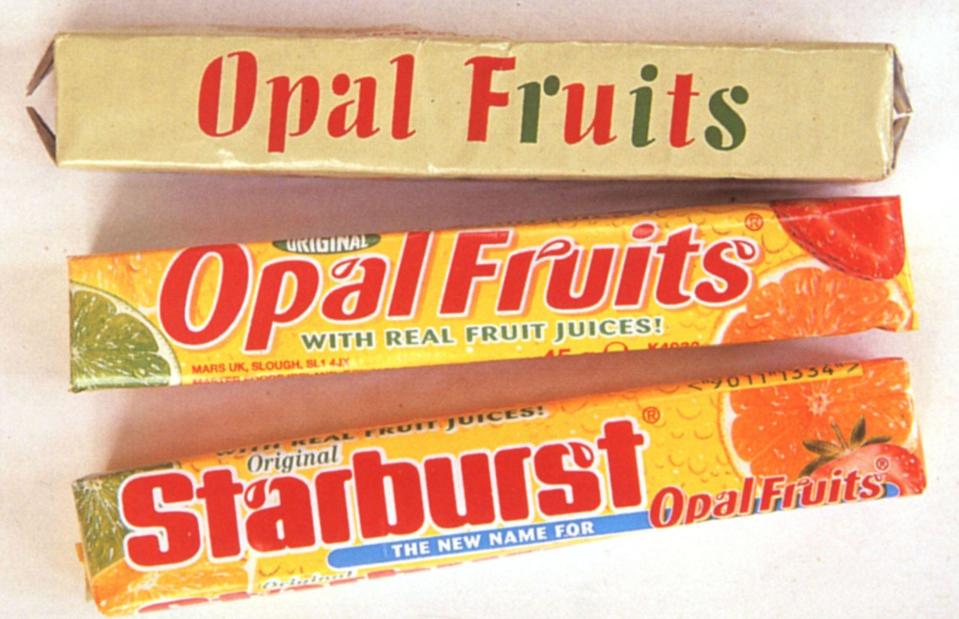
Retro AdArchives/Alamy Stock Photo
Invented in 1960 in the brand's Slough factory and marketed under the name Opal Fruits, these individually wrapped chews in lemon, lime, orange and strawberry flavours were renamed Starburst for the US market when they crossed the Atlantic in 1967. A few years later, the brand made way for a blackcurrant flavour and combined the lemon and lime. They were eventually rebranded as Starburst in the UK and Ireland in 1998, but to many they'll always be Opal Fruits.
Now discover the classic school dinner dishes that will make you nostalgic
Last updated by Lottie Woodrow.


